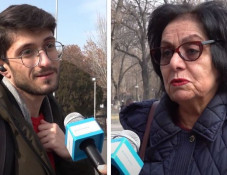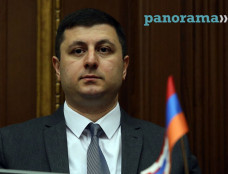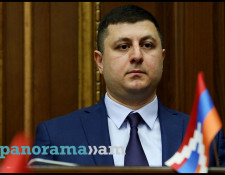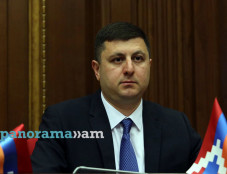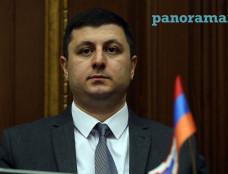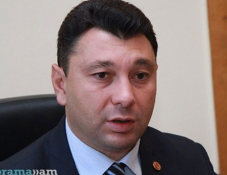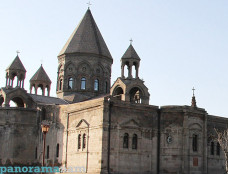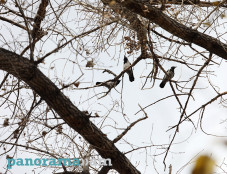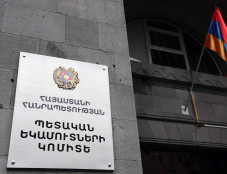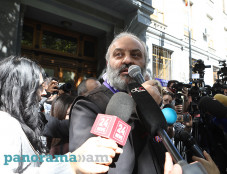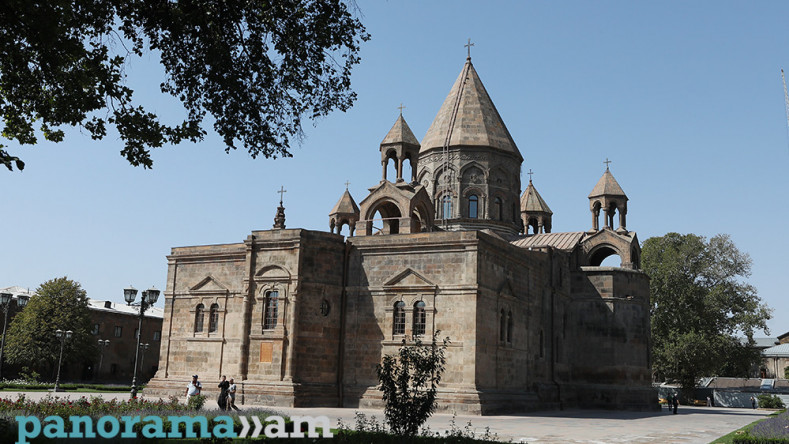
Armenian church honors St Gregory the Thaumaturgus and others
The Armenian Apostolic Church on Saturday commemorates St Gregory the Thaumaturgus, Nicholas the Bishop and St Myron the Wonderworker.
Gregory Thaumaturgus (Miracle Worker) or Gregory of Neocaesarea was a Christian bishop of the 3rd century.
Gregory was born around AD 213 to a wealthy pagan family in Neocaesarea. Originally he was known as Theodore (“gift of God”). He was introduced to the Christian religion at the age of fourteen, after the death of his father. He had a brother Athenodorus, and on the advice of one of their tutors, the young men were eager to study at the Berytus in Beirut, then one of the four or five famous schools in the Hellenic world. At this time, their brother-in-law was appointed assessor (legal counsel) to the Roman Governor of Palestine; the youths were able to act as an escort to their sister as far as Caesarea in Palestine. On arrival in that town they learned that the celebrated scholar Origen, head of the Catechetical School of Alexandria, resided there. Curiosity led them to hear and converse with the master. Soon both youths forgot all about Beirut and Roman law, and gave themselves up to the great Christian teacher, who gradually won them over to Christianity.
When Gregory returned home, he found a Christian community of 17 people waiting for him. Soon afterward, Gregory was elected bishop. Although his training was in speculative theology, Gregory’s pastoral work was concerned with practical applications of the faith. His skills were such that some of his flock soon attributed miracles to him, hence his nickname “The Wonder Worker.”
Gregory’s leadership was renowned during his ministry, as most of the city of Pontus converted to Christianity.
St Nicholas was born during the third century in the village of Patara in Asia Minor. At the time the area was Greek and is now on the southern coast of Turkey. His wealthy parents, who raised him to be a devout Christian, died in an epidemic while Nicholas was still young. Obeying Jesus’ words to “sell what you own and give the money to the poor,” Nicholas used his whole inheritance to assist the needy, the sick and the suffering. He dedicated his life to serving God and was made Bishop of Myra, Lycia while still a young man. Bishop Nicholas became known throughout the land for his generosity to those in need, his love for children and his concern for sailors and ships.
Under the Roman Emperor Diocletian, who ruthlessly persecuted Christians, Bishop Nicholas suffered for his faith and was exiled and imprisoned. The prisons were so full of bishops, priests and deacons that there was no room for the real criminals i.e murderers, thieves and robbers. After his release, Nicholas attended the Council of Nicaea in 325 AD. He died 6 December 343 AD in Myra and was buried in his cathedral church (Church of the tomb of St Nicholas). A unique relic, called manna was known to have formed in his grave. This liquid substance was said to have healing powers which resulted in many pilgrimages, over the centuries, to the church.
St Nicholas was a secret and generous giver of gifts and some believe him to be the model for Santa Claus.
Myron, Bishop of Knossos, the wonder worker was born (approximated 250 AD) while Roman Emperor Dekius was in rule, in the village of Rafkos or Rafkia, southwest of Knossos, Crete. Saint Myron came from a noble family and had God fearing parents who cultivated humility and love for his fellow man. He was a farmer by profession and offered much of his crop to the poor.
He was known for his goodness and he assisted everyone who turned to him for help. Once, thieves burst in upon his threshing floor, and Saint Myron himself helped them lift a sack of grain upon their shoulders. By his generosity, the saint so shamed the thieves, that they began to lead honourable lives. He literally took Christ’s words, “If anyone wants to sue you and take away your tunic, let him have your cloak also” (Matthew 5:40).
After the premature death of his wife and after years of service to his community, Myron was urged to join the priesthood by his fellow Cretans. He eventually rose to the position of Bishop of all Crete. The village of his birth is today called Agiou Myronos in his honour. His career was marked by many miracles, earning him the title “Wonderworker.” One such miracle was when the River Triton had flooded and Myron caused it to become solid in order to walk across it and see his parishioners. He then sent a man back to the river to touch it with his staff so it would flow again.
In spite of his high position, Saint Myron remained a humble philanthropist and passed away when he was close to 100 years old.
Newsfeed
Videos





